|
The first two party system in the United States began around 1791 during George Washington's presidency and lasted until the 1816 presidential election following the War of 1812. Jefferson vs. HamiltonGeorge Washington's cabinet (which included only four men) was dominated by Alexander Hamilton, the Secretary of the Treasury, and Thomas Jefferson, the Secretary of State. The differences between Jefferson and Hamilton regarding the powers of the central government, the proper interpretation of the Constitution, the economy, and foreign policy quickly degenerated into partisanship as other political leaders rallied around Jefferson and Hamilton. Hamilton favored a strong, active, and energetic central government, while Jefferson advocated for a limited federal government that would respect the rights of the states. John Adams sided with the Federalists in spite of some personal and political disagreements with Hamilton, while Jefferson was joined by his close friend, James Madison. Madison's alignment with Jefferson is significant because it represented an end to the political alliance between Madison and Hamilton that produced The Federalist Papers. It's important to note here that the first two party system wasn't a simple continuation of the debate over the ratification of the Constitution between the Federalists and the Antifederalists, although there certainly were some correlations. While nearly everyone who had opposed the ratification of the Constitution would have been gravitated toward Jefferson's party, there were those who, like Madison (the "Father of the Constitution), had advocated strongly for ratification, yet saw Hamilton's plans to strengthen the central government as exceeding the powers delegated by the Constitution. Federalists vs. [Jeffersonian] Republicans
It's important to distinguish Jefferson's Republican Party from the Republican Party that exists in the United States today. The present-day Republican Party was founded in the 1850s after the breakup of the Second Party System. In order to avoid confusion, historians have traditionally referred to Jefferson's party as the Jeffersonian Republican Party, although the "Democratic-Republican" terminology used by political scientists has lately become more common (in spite of its historical inaccuracy). Strong Central Government vs. States' RightsThe difference between the Federalists and the Republicans concerned the role of the central government. Although the Constitution was drafted and ratified in order to create a stronger central government than had existed under the Articles of Confederation, the Constitution still retained many features of federalism, which limited the power of the central government. In The Federalist Papers, Madison specifically reassured states' rights advocates that the Constitution would not destroy the power of state governments. "The powers delegated by the proposed Constitution to the federal government are few and defined. Those which are to remain in the State governments are numerous and indefinite." -- Federalist No. 45 (Madison)
The Fears of the Federalists
While Federalists feared anarchy, Jefferson and Madison were much more fearful of tyranny. During Shays' Rebellion, Jefferson wrote to Madison, "a little rebellion now and then is a good thing." Rationally, Jefferson did not see how one rebellion in a single state threatened the existence of the United States, but he feared that a strong central government could place the states at risk of having their rights stripped away as they had been at the outset of the American Revolution. "I am not a friend to a very energetic government," Jefferson wrote, "It is always oppressive." This view of government was behind all of Jefferson's efforts to keep the power of the central government as limited as possible, fearing oppression (which he had experienced) more than anarchy (which he had not experienced). Strict vs. Loose Construction of the ConstitutionIn order to limit the power of the central government, Jefferson interpreted the Constitution as a strict constructionist. To Jefferson, the government only had the powers that were enumerated (specifically listed or numbered) in the Constitution. Hamilton, a loose constructionist, advocated for the doctrine of implied powers, claiming that by granting some powers to the central government in the Constitution, the Framers had implied a grant of other powers that will assist the government in executing the enumerated powers.
Constituents: The Support Bases of the Federalists and RepublicansEvery political movement in a society with representative government depends highly upon the constituencies being represented by each political faction. Hamilton and the Federalists drew their support largely from Northeastern coastal areas that were highly dependent on commerce. These were the same people who had advocated most strongly for a stronger central government that would have the power to control trade. The Northeast was also cultivating a manufacturing sector, which Hamilton sought to use the power of the central government to promote.
Economic Development vs. Laissez-FaireAlexander Hamilton believed that the future of the United States as a powerful nation depended on the development of a manufacturing sector on par with that of Britain. He believed that government would be an essential support for building a manufacturing sector that would make the United States an economic and military power. Jefferson, who saw no need for domestic manufacturing when the United States could trade for European manufactured goods, resisted Hamilton's plans to develop a manufacturing sector. Jefferson advocated for a laissez-faire (let it be) approach by government toward economic involvement. His ideas were influenced not only by his devotion to agriculture, but also by the influence of Adam Smith's recently published book, Wealth of Nations, which advocated laissez-faire and free trade as the best paths to economic growth. Jefferson's "hands off" approach contrasted with Hamilton's "hands on" approach to government's role in the economy. The National BankBy far, the most famous disagreement between Jefferson and Hamilton was on the issue of the national bank. Hamilton believed that the establishment of a national bank was "necessary and proper" for helping the government to execute its enumerated powers in the financial sector, such as collecting taxes, borrowing money, and coining money. Jefferson saw Hamilton's plan for a national bank as an unconstitutional seizure of power by the federal government. At no point does the Constitution ever explicitly authorize Congress to charter a bank. Jefferson also opposed the bank on economic grounds, as he believed that it would increase the central government's role in the economy and work for the benefit of commercial and manufacturing interests. He advised President George Washington to veto the bill that created the First Bank of the United States, but Washington ultimately went with Hamilton's advice on the matter. To download the primary sources from which I've drawn these quotes, click here. Protective Tariff vs. Free TradeIn order to help with the establishment of a domestic manufacturing industry, Hamilton advocated for a tariff that was higher than what was necessary to fund the government, known as a protective tariff. A protective tariff would artificially increase the price of foreign manufactured goods in order to encourage Americans to buy more expensive products manufactured domestically, which would help with the growth of domestic manufacturing. Jefferson opposed protective tariffs for both constitutional and economic reasons. Southern farmers who depended on foreign trade would find themselves paying more for the manufactured goods that they bought from Europe, so Jefferson's laissez-faire approach benefited them most. In addition, the Constitution empowers the government to levy taxes in order to "pay the Debts and provide for the common Defense and general Welfare of the United States." Since the objective of a protective tariff meets none of these criteria, Jeffersonians believed that such a tariff was unconstitutional and that only revenue tariffs should be imposed by the central government. The constitutionality of protective tariffs would continue to be a divisive issue in the United States for decades, culminating in the Nullification Crisis following the Tariff of 1828. Federal Assumption of State War DebtsOne of Alexander Hamilton's goals was to build public credit. At the time the Constitution was ratified, the United States government had a massive debt that it was making little progress in repaying. Some states, such as Massachusetts, had similar debt problems as a result of the Revolutionary War. In order to effectively build public credit, Hamilton proposed that the federal government assume the war debts of the states. Jefferson opposed Hamilton's plan to assume state debts because it would bind the states more closely together and strengthen the central government. Also, as a Virginian, he came from a state that had paid its war debts in full and would have to pay the war debts of other states under Hamilton's plan. In what is known as the "Dinner Table Compromise" (or the Compromise of 1790), Hamilton got Jefferson and Madison to go along with his plan for the federal government to assume state war debts in return for a promise that the federal capital would be moved from New York (the financial center of the United States) to a site on the Potomac River that separated Virginia from Maryland. Jefferson and Madison believed that this would remove the government from the influence of the financial sector and that this would outweigh the impact of Hamilton's debt assumption plan, but today, the federal government can hardly be considered outside of the influence of New York's powerful financial sector. Foreign Policy: France vs. Britain
Hamilton and the Federalists did not share Jefferson's enthusiasm for the French Revolution, believing it to be a threat to the stability of Europe. Hamilton was an admirer of the British system of government and saw the French Republic as going far beyond that form of balanced government into something that could degenerate into mob rule. Jefferson was disappointed when Washington issued his Neutrality Proclamation in response to the war between France and Britain. In spite of this disappointment, Jefferson would later come to appreciate what would become one of George Washington's most enduring presidential legacies and the centerpiece of his famous Farewell Address. The End of the First Two Party SystemThe first two party system in the United States lasted through the War of 1812, after which Federalist leaders were branded in the popular mind as un-American due to their role in the ill-fated Hartford Convention. James Monroe's election as president ushered in a brief period of non-partisanship known as the "Era of Good Feelings."
0 Comments
Your comment will be posted after it is approved.
Leave a Reply. |
Tom RicheyI teach history and government Archives
May 2023
Categories
All
|

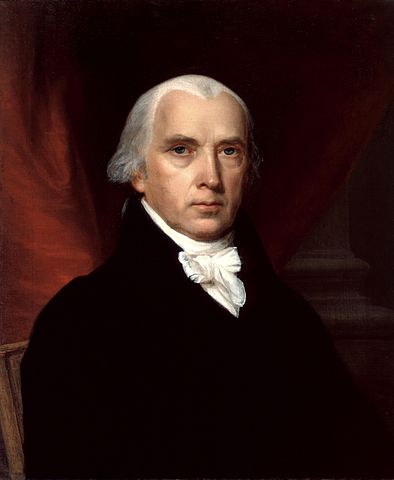
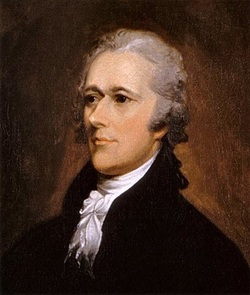

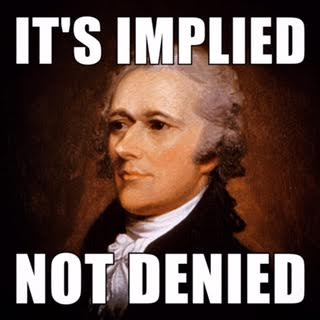
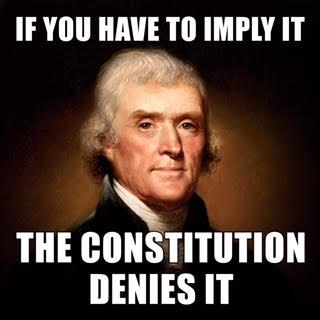
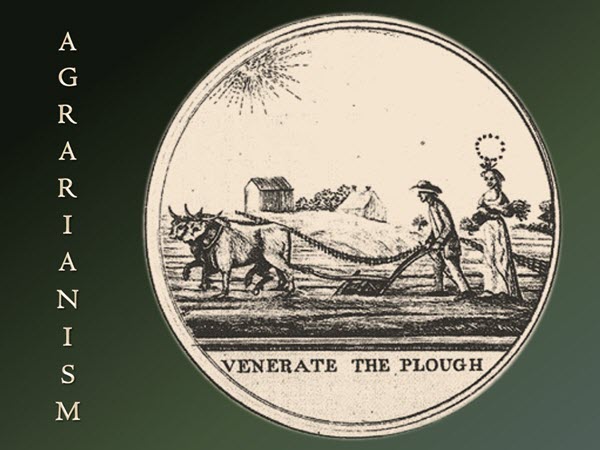
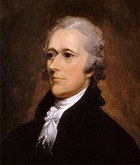
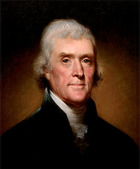

 RSS Feed
RSS Feed